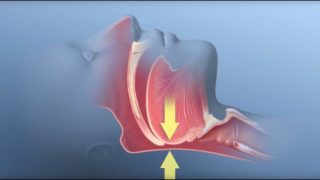


Did you know that approximately 18 million Americans have obstructive sleep apnea (OSA)? According to the American Sleep Apnea Association, there could be a spike, as many cases are undiagnosed. You might be wondering: what exactly is obstructive sleep apnea? Please be sure to read through the article as we navigate this condition hardly known by many.
OSA is when the normal flow of air is frequently stopped throughout your sleep. It causes your chest and diaphragm muscles to overwork as they try to pull air to your lungs. In the process, your breathing becomes low, and it may even stop briefly. You then start breathing again with a loud snort. These periods when you stop breathing are called apnea.
Surprisingly, all these times, you stop breathing briefly in your sleep and you are not aware. You hardly remember any sleep interruptions you encountered during the night.
The condition may worsen and cause some health problems if left untreated. If not monitored, can cause severe morbidity such as:
The good thing is that you can prevent such problems from occurring. All you need is to make an appointment with an ENT doctor in Los Angeles. Proper diagnosis is pivotal in preventing complications.
Regular screening is necessary, especially if you snore. You may wonder where to find a specialist that is suitable for the treatment you need. Well, there are a number of them online but be aware of scams. If you are in L.A. our specialists at Westside Head & Neck are here to help.
There are symptoms that should get you dialing your ENT immediately. Loud snoring is one of the most apparent. However, not all people with sleep apnea snore. Additional signs include:
Most of these symptoms are a result of poor sleep and interrupted breathing leading to low oxygen levels. If you have people around when you sleep, they may probably notice you have OSA even before you do. Symptoms vary from one individual to another.
Several factors cause blockage of the airways. The main ones are:
OSA can affect anyone, including c
Sleep disorders, however innocuous, can lead to life-threatening diseases and cardiovascular complications. Do not wait it out. If you are having sleep disorders, schedule an appointment with a specialist.
It isn’t easy to treat OSA without knowing the root cause. That is where visiting a specialist is critical. Once you see a doctor, they will perform a physical examination. They may ask questions about your sleep patterns like, how long does it take you to fall asleep, have you ever been told you snore, among others.
Doctors diagnose OSA by analyzing your sleep patterns. You may need to spend the night in a designated sleep lab or have it done at home. You would put on a monitor to record your airflow, oxygen levels, breathing patterns, heart rhythm, brain waves, legs, and arms movements.
Once the doctor determines the root cause of the condition, he or she can administer treatment. The goal is to ensure your airflow isn’t obstructed. There are several methods, which include:
Depending on your case, doctors may recommend a lifestyle change. This form of treatment is common for mild cases. Your doctor may ask you to lose weight, limit alcohol use and stop smoking.
Doctors prescribe nasal decongestants for mild cases. They help relieve snoring. However, they should not be used for an extended duration.
Therapies may include positive airway pressure where a machine fits into your nose and delivers air pressure. There is also a mouthpiece device, which is an alternative for mild cases, but the common one is positive airway pressure. It may improve your quality of life by reducing your sleeplessness.
This method will be the last result if other treatments do not work. There are surgical options for OSA. These options include tissue removal, upper airway stimulation, jaw surgery, tracheostomy, an opening in the neck, and implants. Other surgeries include nasal surgery and the removal of adenoids.
OSA can affect anyone. If you have any signs and symptoms, as stated, it is time you seek services of a specialist. The good thing is that different treatment options will help you get a good night sleep and relief to breathe easier. Let us be your choice for a sleep apnea specialist in Los Angeles at Westside Head & Neck. We examine your sleep history for the best outcome. Board-certified doctors at this facility utilize modern technology to offer lasting results. Call us today!